Construction Claims & Prevention and Resolution Tips
Claim Management is an unavoidable process in any construction project’s life cycle. The best practice to avoid construction claims such as defect and delay construction defect claims is to eliminate the root causes by the alignment of documents before starting a project. Establishing good communication channels between parties is an effective method that is key to resolve disputes at the early stages. However, construction projects especially the larger ones often include uncertainties that might trigger disagreements. Disagreements in construction projects affect both time and cost performance but it is possible to avoid them. Strategies and practices can be used to reduce the frequency of construction defect claims during the design, bidding, and execution phases. In this article, we will discuss common types of construction claims such as defect, delay, and extra work and give tips for prevention.
Table of Contents
Construction Claims
Let’s start by discussing the primary phases of a construction project.
Typically a construction project has four phases;
- Pre-tender
- Contract Formulation
- Construction
- Post completion
Most claims occur during the construction phase. However, they are closely related to incomplete scope sentence, incompatible contract documents, and poor design.
In a construction project, once tender documents are completed and the contract is awarded by the contractor, the greatest occasion to prevent claims is missed. During the pre-tender and contract formulation phases, significant elements are under the control of the client. If all the project documentation, design packages, information, and scope are aligned to purpose, the risks will be minimized.
However, construction disputes are endemic in the industry and conflicts are inevitable especially in projects with various stakeholder expectations and requirements.
Basically, problems can be grouped into two categories within a construction project.
- Problems, which have their origin in the planning phase of the project.
- Problems, which are caused by issues and conflicts during the execution phase (construction phase)
Construction Claims: What are they?
In a nutshell, a construction claim is a formal statement by a party involved in a project (usually the contractor) alleging that they’ve suffered a loss due to the actions (or inactions) of another party (often the owner or architect). These losses can be financial, like unpaid invoices, or they can be related to schedule disruptions or quality issues.
Preventing Construction Claims
An ounce of prevention is definitely worth a pound of cure when it comes to construction defect claims. Here are some key prevention tips to keep in mind:
- Ironclad Contract: Having a clear, well-written contract that outlines the rights and responsibilities of all parties involved is crucial. This contract should address things like payment schedules, change orders, and dispute resolution procedures.
- Detailed Documentation: Keep meticulous records of everything! This includes contracts, emails, meeting minutes, photos, and any other documentation that supports your work and decisions.
- Open Communication: Maintain open and frequent communication with all project stakeholders. Address any potential issues head-on and discuss them clearly to avoid misunderstandings.
- Change Orders in Writing: Any changes to the original project scope or specifications need to be documented in writing with formal change orders. This ensures everyone is on the same page and avoids confusion later.
Resolving Construction Claims
If a claim does arise, don’t panic! Here are some resolution tips to help you navigate the situation:
- Early Intervention: The sooner you address a claim, the better. Don’t wait for things to escalate.
- Negotiation: Often, claims can be resolved through negotiation. Be prepared to present your case with clear documentation and be open to compromise.
- Mediation: If negotiation fails, consider mediation, where a neutral third party helps both sides reach an agreement.
- Arbitration/Litigation: As a last resort, arbitration or litigation may be necessary. However, these options can be expensive and time-consuming.
By following these tips, you can significantly reduce the risk of construction claims and navigate any that do arise more effectively. Remember, clear communication, proper documentation, and a proactive approach are your best allies in keeping your construction projects running smoothly.
Construction Claims Management
Construction claims management is a process that includes prevention and mitigation of construction claims and handling when they occur. Typically, there are two parties involved in the claim management processes.
- The party who makes the claim
- The party who defends against the claim
A claim is an assertion for “something” due or believed to be due which is usually the result of an action. In the construction industry, “something” is often related to additional time and cost result from additional work.
Contractors make claims against the client and subcontractors make claims against the contractors depending on the situations. However, clients make also claims against the contractors depending on the contractor’s low performance or obligations that are not performed.
Common Types of Construction Claims
The below figure illustrates claims settlement methods [1].
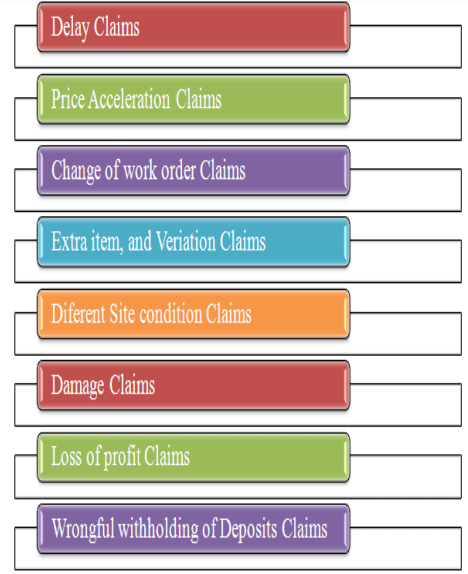
Common types of construction claims including but not limited to the following;
- Delay Claims
- Acceleration Claims
- Change Order and Extra Work Claims
- Differing Site Conditions Claims
- Damage and Defect Claims
- Loss of profit Claims
- Wrongful withholding of Deposits Claims
Claim Management Processes
There are four processes that are closely related to different phases of a project.
- Claim Prevention
- Claim Mitigation
- Pursuing Claims (Claim Identification and Quantification)
- Claim Resolution
Note that if the agreement between the parties is reached, then the claim is resolved and becomes a change.
If the agreement is not reached, the claim may proceed to negotiation, mediation, arbitration, and litigation before it is completely resolved. The below figure illustrates claims settlement methods [2].
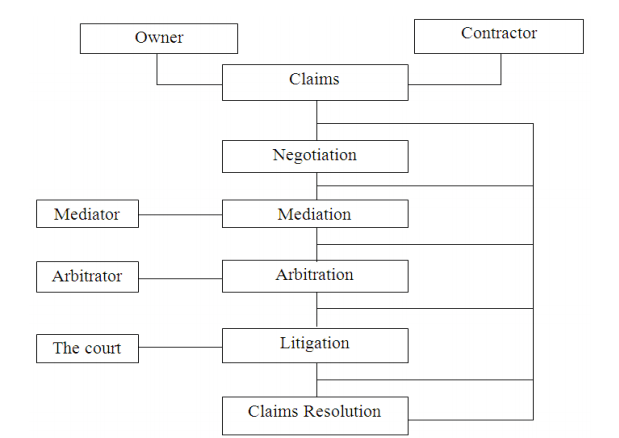
Tips for Preventing Construction Claims During the Execution Phase
Construction claims may occur due to different objectives of parties, scope changes, performance issues, weather conditions, unexpected events, etc. The following recommendations can help you to prevent your project from claims during the execution phase.
1. Before accelerating a contractor, analyze the current status and determine the delays in the contractor’s schedule. If the contractor is not behind the schedule, acceleration may bring just additional cost to the project.
2. All change orders should be recorded from the beginning until the closing of the project. Your document control system should be well established.
3. Require contractors to support their change order cost proposals with updated work schedules. Determine the cost effects of delays or delay impacts of costs in order to avoid construction claims.
4. Prepare time impact analysis for all change orders and determine the activities that cause delays in the critical path. Analyze the activity relationships and calculate the floats to understand their roles on delays.
5. Establish procedures for RFI’s (Request For Information) and improve your RFI process.
6. Establish a register system and set up a SharePoint for all as build drawings, shop drawings, transmittals, submittals, approvals.
7. Establish a daily reporting system for the site. Each report must record labor and equipment numbers, performed work quantity, weather conditions, and idle hours.
8. Periodically evaluate your labor and equipment performance calculations. Such calculations are the principal source of evidence for verifying the contractor’s performance.
9. Prepare a schedule specification and determine the creating and updating processes. Work schedules should reflect the complete scope of work and updates should reflect the real site conditions. Enforce contractors to make updates at least monthly.
10. Require contractors to prepare a detailed breakdown of their bids. Each bid should at least involve material, labor, equipment, and overhead costs.
11. Make sure that the design team produces clear and complete drawings.
Types of Construction Claims Demystified: A Contractor’s Guide
Construction projects are complex undertakings, and with that complexity comes the potential for disagreements. When these disagreements arise, they often manifest as types of construction claims. Understanding these claims is crucial for any contractor to navigate the often-murky waters of project disputes.
There are several types of construction claims, each with its own cause and effect. Let’s explore some of the most frequently encountered ones:
-
Delay Claims: These claims surface when a project experiences schedule setbacks due to factors beyond the contractor’s control. This could be anything from unexpected weather delays to owner-directed changes or issues caused by other subcontractors. In such cases, the contractor seeks compensation for the additional costs incurred due to the extended timeline.
-
Differing Site Conditions Claims: Imagine a scenario where the actual conditions at the construction site significantly differ from what the initial plans outlined. This could involve encountering unexpected underground utilities, discovering unsuitable soil composition, or facing unforeseen environmental challenges. The contractor may file a type of construction claim seeking compensation for the additional costs associated with adapting to these unforeseen conditions.
-
Change Order Claims: Change orders are formal documents outlining modifications to the original project scope. While these are a common occurrence, disagreements can arise regarding the cost and time impact of these changes. The contractor might file a type of construction claim if they believe the agreed-upon compensation for the change order doesn’t reflect the actual additional work involved.
Remember, this is not an exhaustive list, and the specifics of construction claims can get quite intricate. However, this knowledge equips you to be a more proactive and informed participant in any construction project.
Conclusion
Claims are costly and time-consuming demands in construction projects. Claim management is an inevitable but manageable process. Best practice to avoid claims is to manage the breeding grounds by the alignment of documents before starting construction. A well-established change order management and schedule management system helps to avoid claims during the various phases of the project. Also, documentation, communication, and coordination systems should be well established to minimize the effects of claims.
In this article, we discuss construction defect, delay, and extra work claims, and tips for prevention during the execution phase. We hope that it will be useful for professionals and project managers working in the construction industry. If you want to add anything or share your experiences related to construction claims management, you can do by using the comments box below.
External References
[1,2] Types and Causes of Construction Claims, Abhishek Shah, Dr. Rajiv Bhatt, Prof. J. J. Bhavsar
See Also

Victor Z Young is a Civil Engineer with 35 years of experience working alongside the executive team of various construction companies. Victor specializes in construction insurance, delay analysis, performance analysis and engineering. He holds a Doctor of Project Management from Northwestern University.

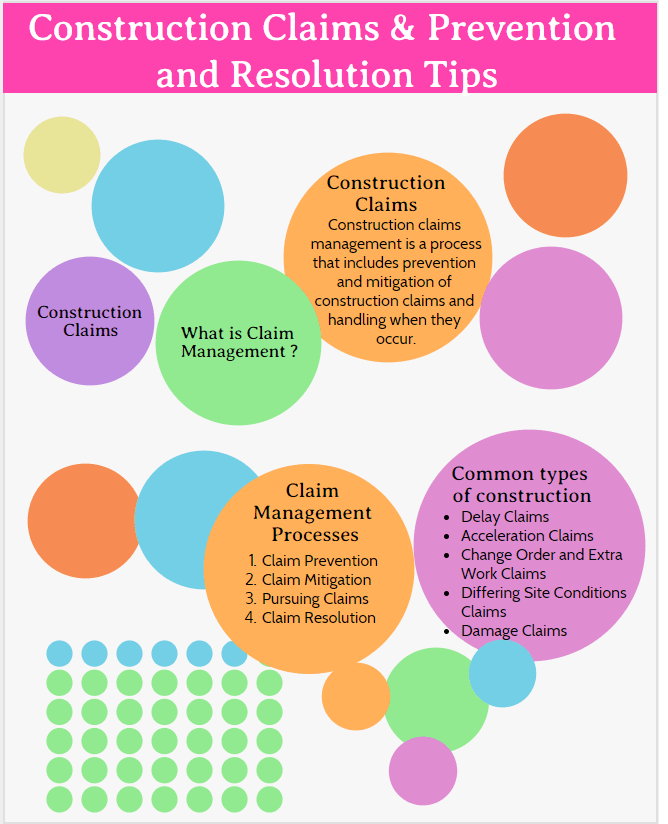

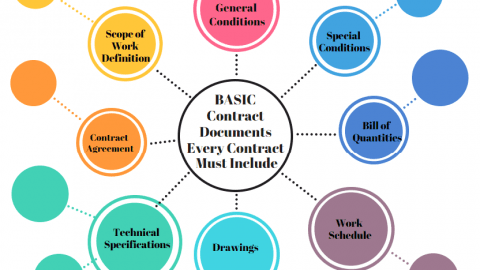


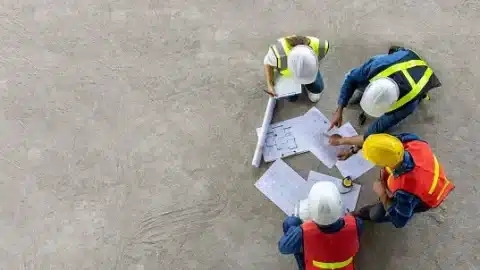
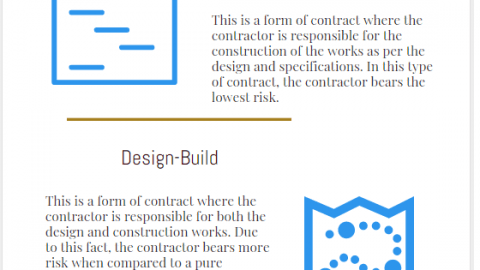

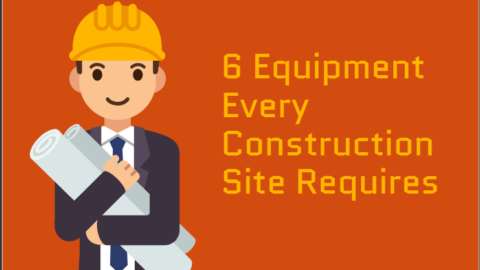

Excusable delays simply mean delays at no fault to the contractor. In this case, a time extension is owed to the contractor.